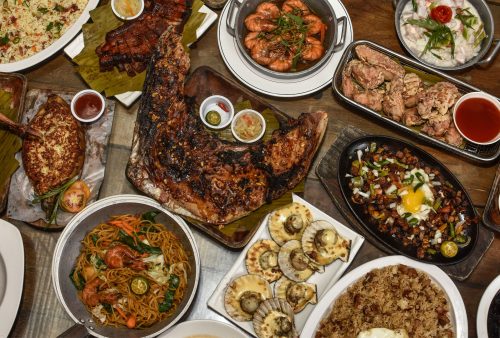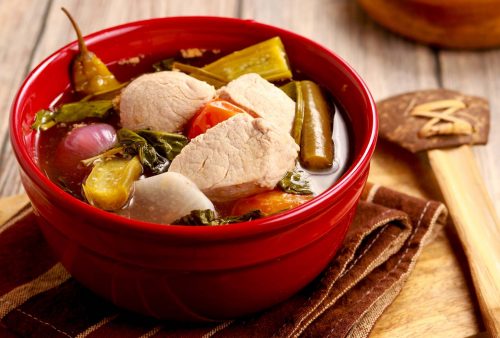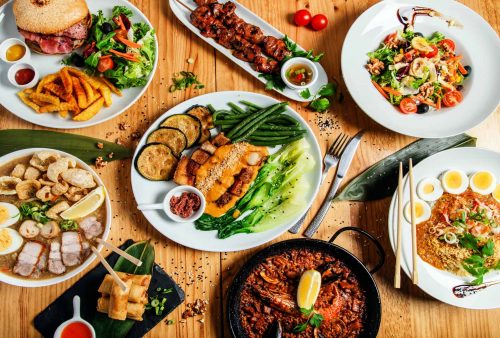Below are 15 mouth-watering dishes you should definitely try when exploring the best of Filipino cuisine.
15 Mouth-Watering Filipino Food
1. Adobo

This iconic Filipino food features meat (usually chicken or pork), seafood, and selected vegetables to suit vegetarian food lovers. Meat or veggies are cooked in vinegar, soy sauce, garlic, and other spices. The result is a savoury and tangy dish that perfectly pairs with rice.
For vegetarians, you can use ladies’ fingers, chilli peppers, Kang-kong, tofu, mushroom, eggplant, and string beans.
2. Bibingka
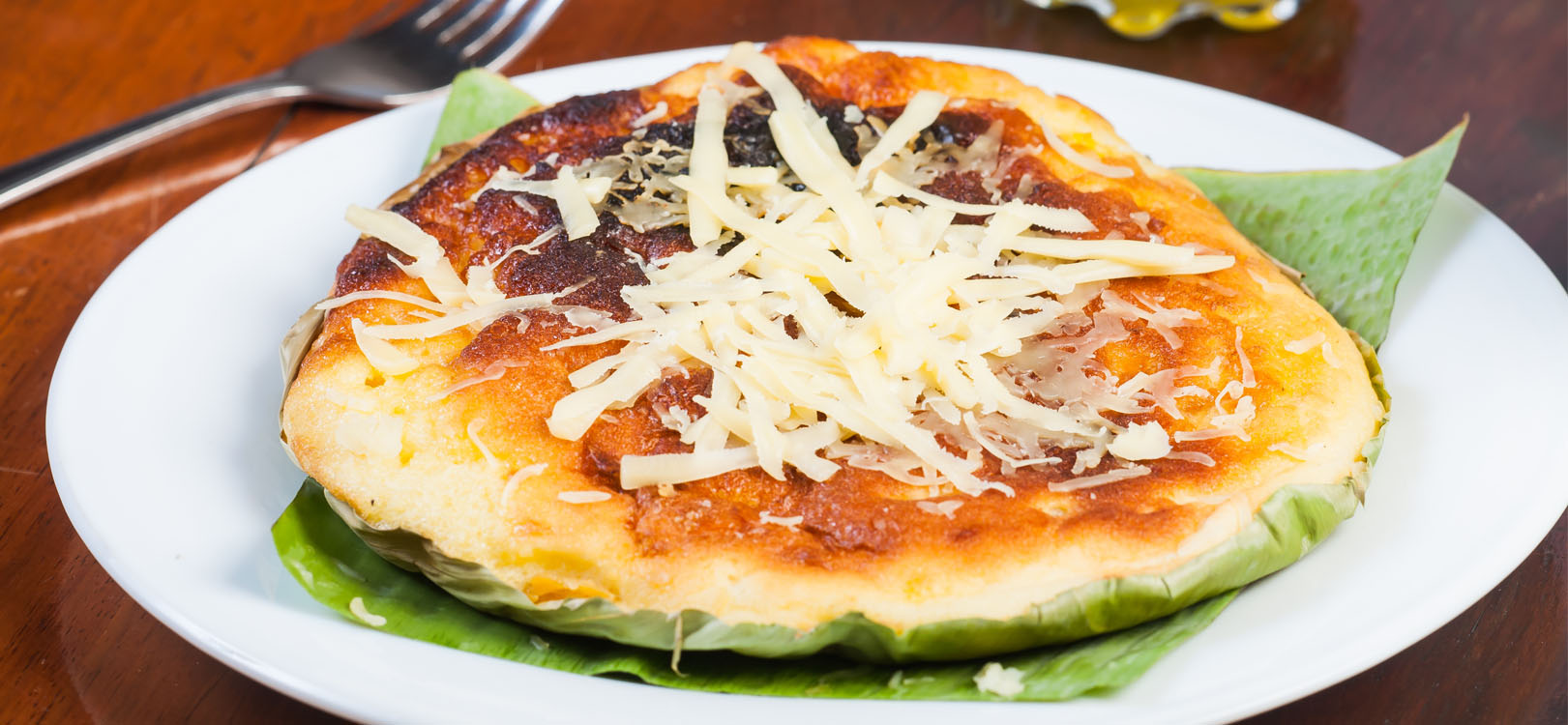
It is one of the many varieties of rice cakes in Filipino cuisine. A traditional rice cake made with coconut milk topped with salted egg and cheese. The cake is usually cooked in a clay pot lined with banana leaves and baked over hot coals, giving it a slightly smoky flavour and crispy texture on the outside.
Bibingka can also be topped with butter, grated coconut, or a sweet coconut glaze. Some modern variations of bibingka may include different ingredients or flavourings, such as ube (purple yam) or pandan (screw pine) leaves, which give the cake a special colour and aroma.
3. Bicol Express
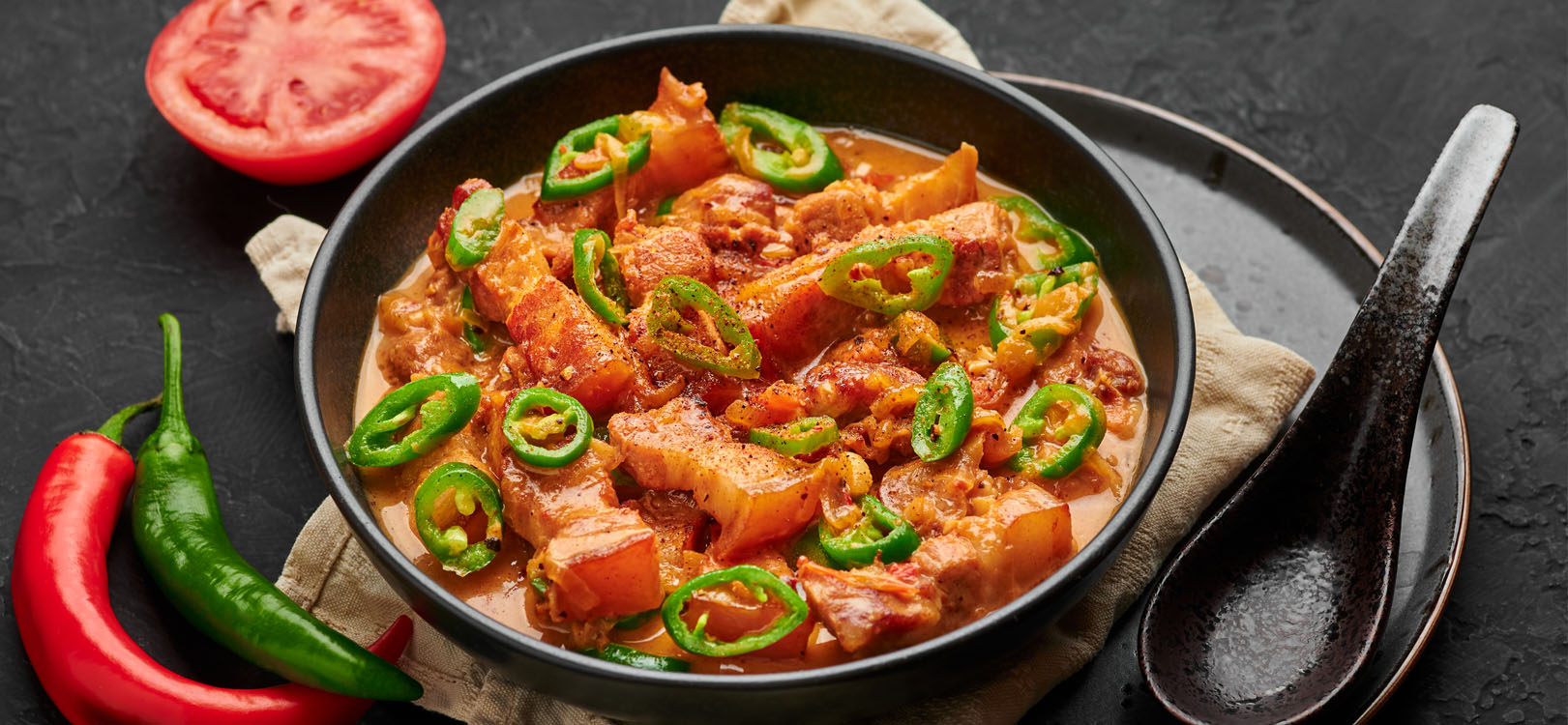
A Filipino dish that is known for its intense heat and rich flavour. It is made with pork, coconut milk, and lots of chilli peppers originating from the Bicol region. It is often with bite-sized pieces of pork combined with chillies, coconut milk, prawn paste (bagoong), onions, tomatoes, and garlic. This is one of the few originally spicy cuisines that the Philippines has.
4. Caldereta
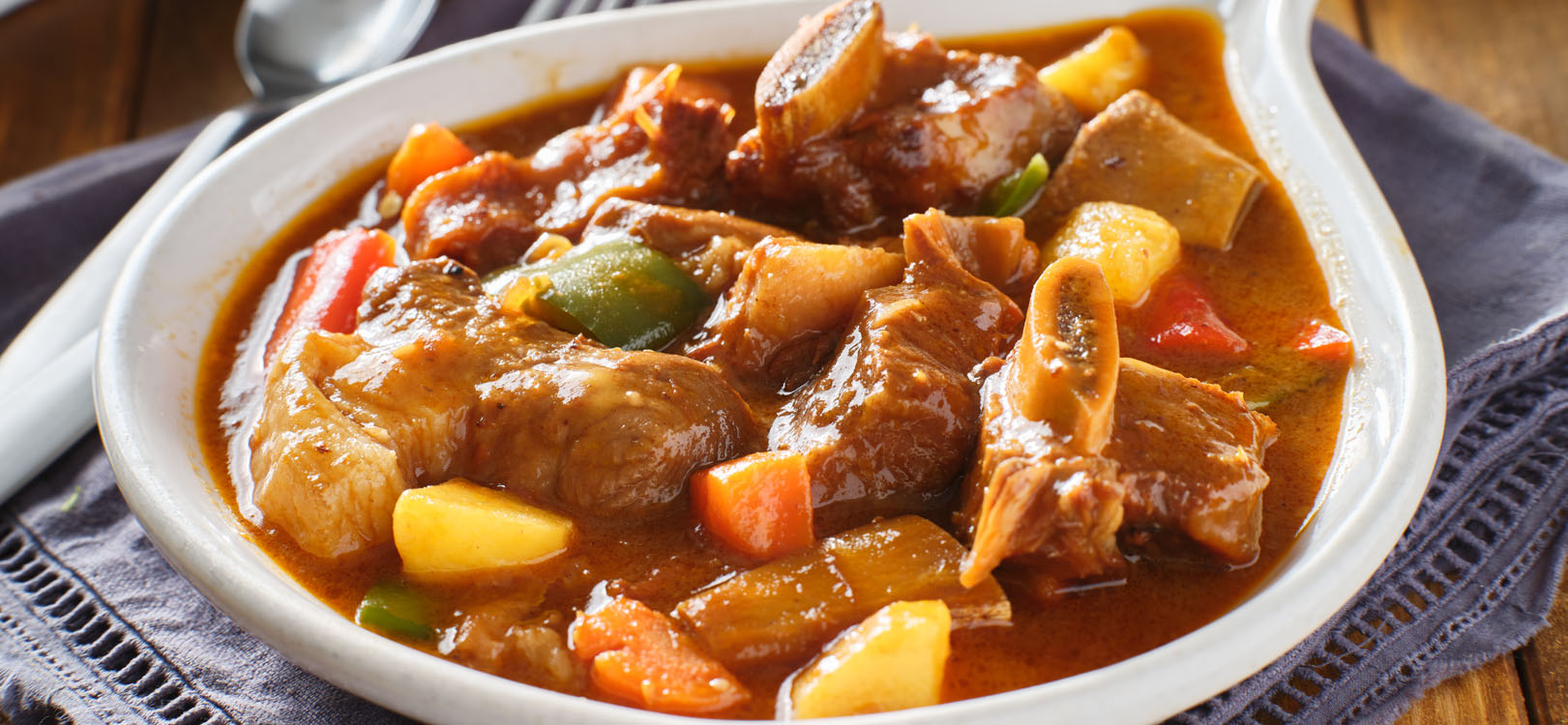
Caldereta is a popular Filipino food and is often seen being served during special occasions and celebrations such as weddings, birthdays, and fiestas. It is typically eaten with rice and can be enjoyed with a variety of side dishes such as pickled vegetables, fried plantains, or salted eggs. The meat is typically cut into small pieces and cooked in a tomato-based sauce that is seasoned with a variety of spices such as garlic, onions, and bay leaves. Some add liver spread as well, making the taste of the dish more distinct.
5. Empanada
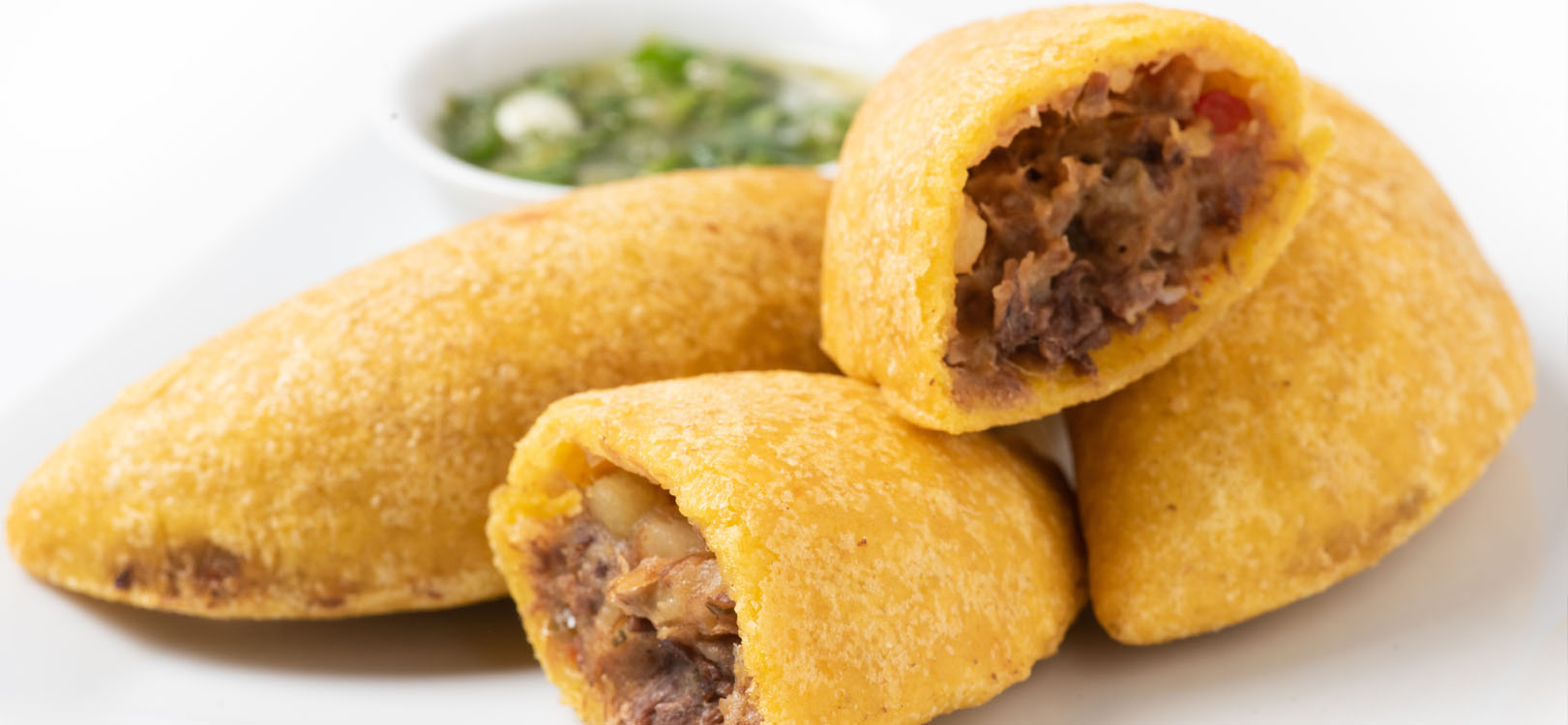
This is a Filipino version of Spain’s pastelillos or pastelitos. It is a savoury pastry and popular street food. The Filipino version of empanada is made with a flaky pastry shell filled with a mixture of ground meat (often chicken or beef), vegetables such as potatoes and carrots, and sometimes even hard-boiled eggs. The filling is seasoned with spices and herbs such as onions, garlic, and paprika, which give the empanada its distinct flavour.
The pastry is made from a mixture of flour, water, and butter, which is then rolled out and filled with the savoury mixture. The edges are then crimped, and the empanadas are either baked or deep-fried until golden brown.
6. Halo-halo

Halo-halo is a popular dessert in Filipino cuisine and definitely a cultural icon, especially during hot and humid days. The name “halo-halo” literally means “mix-mix” in Tagalog, which refers to the way the dessert is prepared and enjoyed. The cooling mixture of shaved ice, evaporated milk, and various toppings gives a sweet relief from the scorching heat of the weather.
Toppings used in halo-halo typically include a combination of sweetened beans (such as mung beans or kidney beans), fruits (such as bananas, jackfruit, or mangoes), and jelly (such as agar-agar or gulaman. Some include ube (purple yam) or leche flan and a scoop of ice cream.
7. Kare-kare
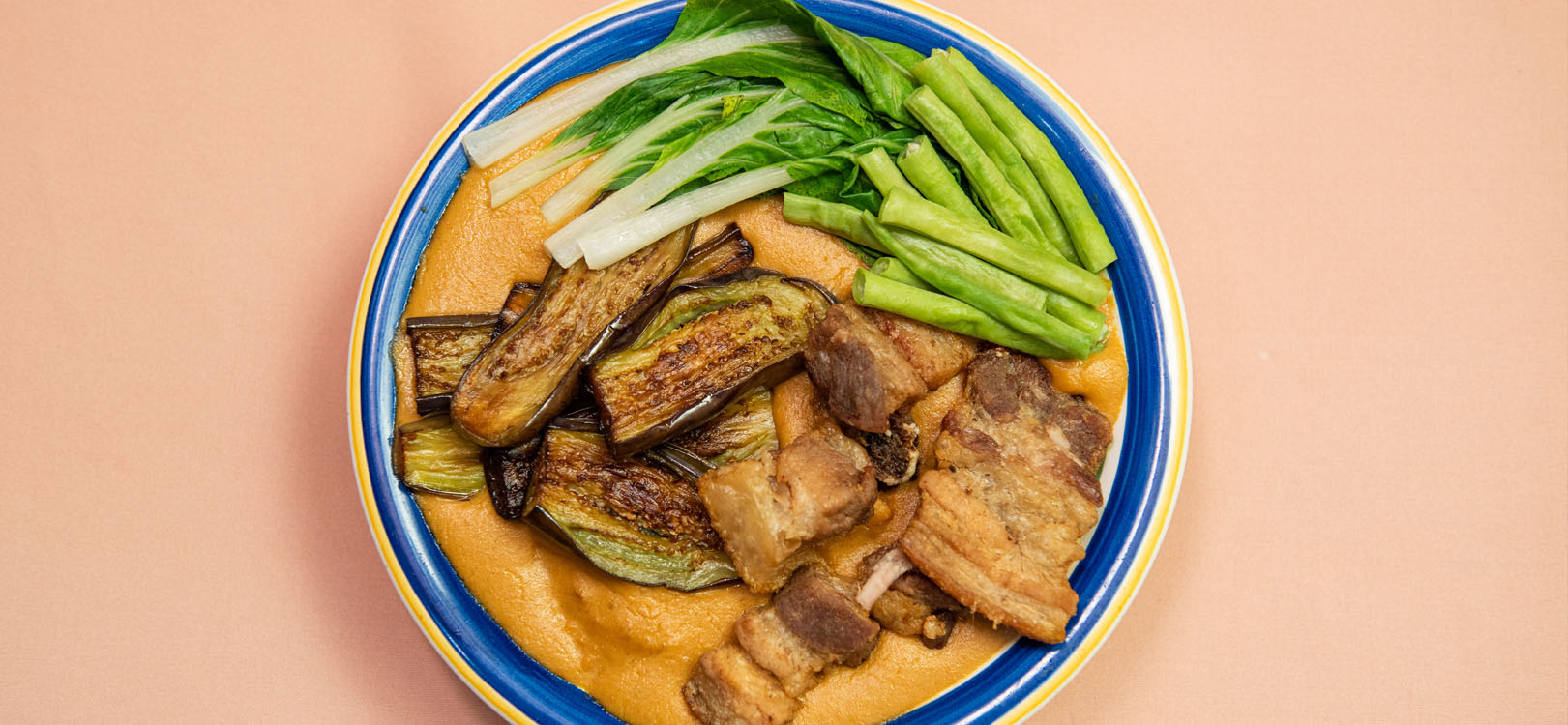
This is a classic Filipino cuisine with a rich and creamy texture that blends in a unique flavour. It is a stew that uses tender oxtail pieces that are cooked slowly until they are tender and fall off the bone. Then this will be flavoured with a rich and savoury peanut sauce and a variety of spices, such as garlic and onion.
Vegetables like Eggplant, bok choy, and string beans are also included adding a fresh and healthy element to the dish and a nice contrast to the creaminess of the sauce.
As a condiment, shrimp paste (alamang na bagoong) is served to give a salty taste to the kare-kare. Paired with steamed rice, surely the lunch with the family will be scrumptious.
8. Laing
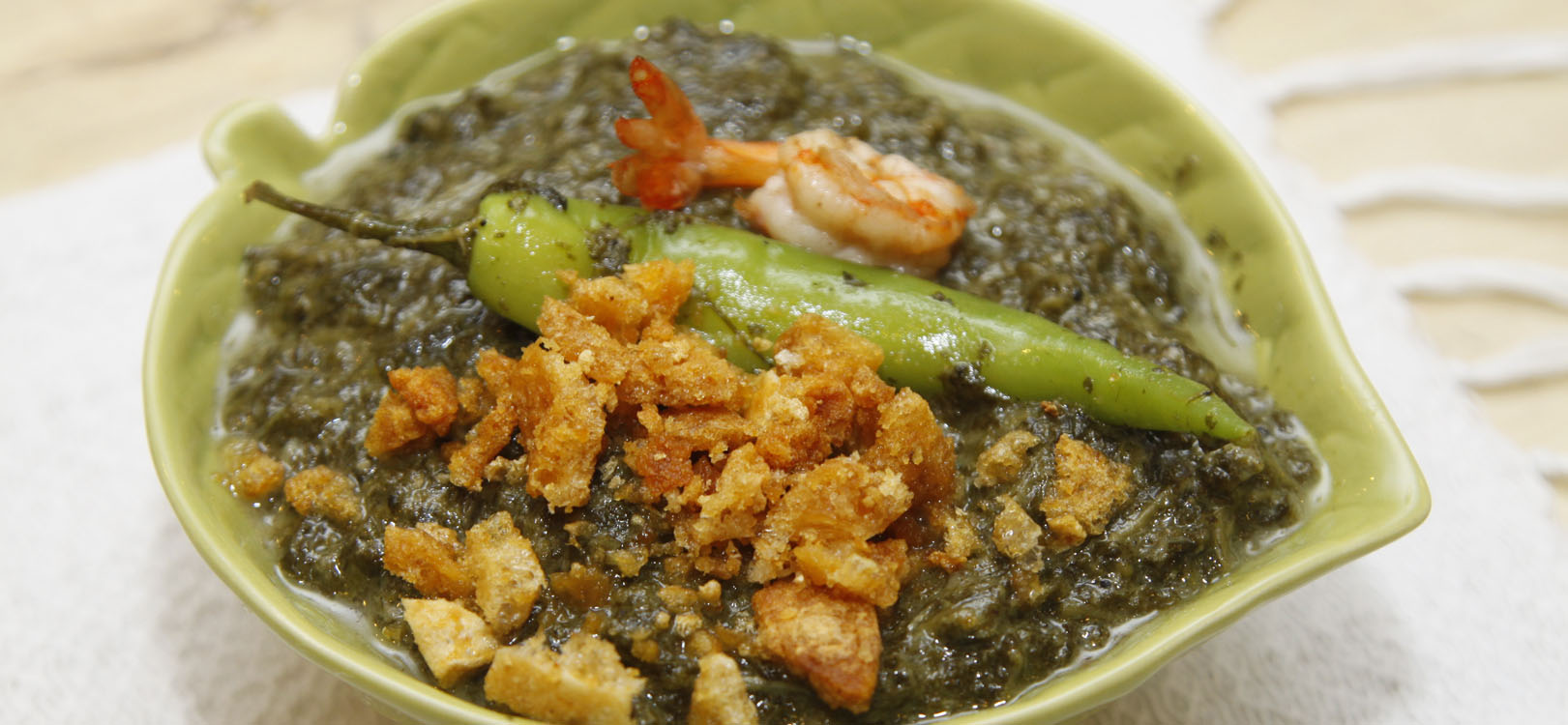
A spicy dish that originated in the Bicol. It is made with finely chopped taro leaves that are simmered in coconut milk, along with a variety of other ingredients such as shrimp paste, ginger, garlic, and chilli peppers. The dish is traditionally cooked in a clay pot, which helps to infuse the flavours of the ingredients together, resulting in a rich and creamy dish with a slightly spicy kick.
9. Lechon
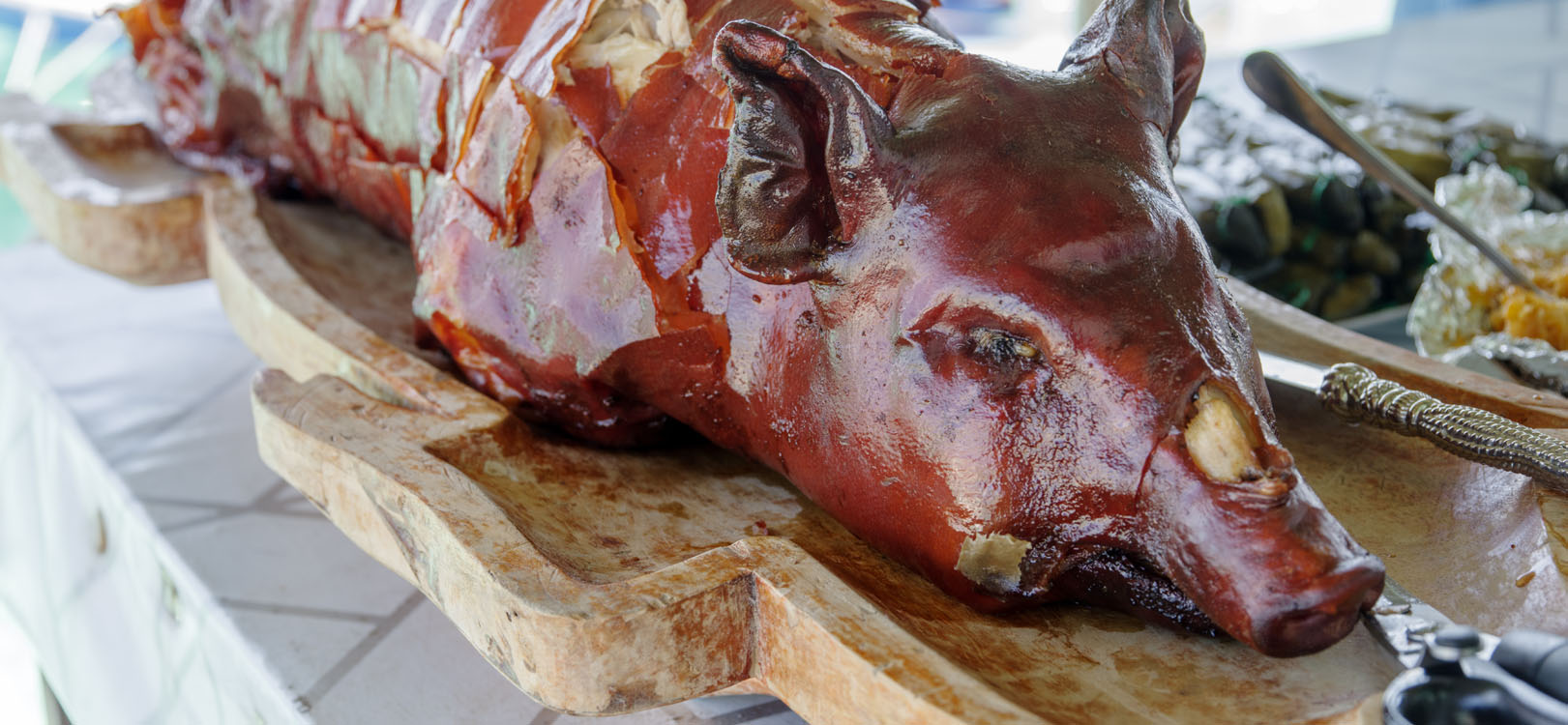
A Filipino classic and is considered one of the most iconic dishes in Filipino cuisine. Lechon is a whole roasted pig that is typically served at special occasions and celebrations such as weddings, fiestas, and holidays. The skin is crispy and flavourful, while the meat is tender and juicy. It is also a popular street food and can be found at food markets and festivals throughout the Philippines.
This is a must-try Filipino food when visiting the Philippines. It is a true testament to the country’s culinary heritage and is sure to leave a lasting impression on anyone who tries to taste it.
10. Longganisa

This Filipino food is a sausage type that is known for its mixed sweet and savoury flavour. The sausage is made from ground pork that is mixed with various spices and seasonings such as garlic, vinegar, sugar, and black pepper. The mixture is then stuffed into sausage casings and formed into long, thin links.
This is cooked by frying until it is crispy on the outside and juicy on the inside; others like to have the Longganisa garlic rice, eggs, and a side of sliced tomatoes or atchara (pickled vegetables).
11. Lumpia
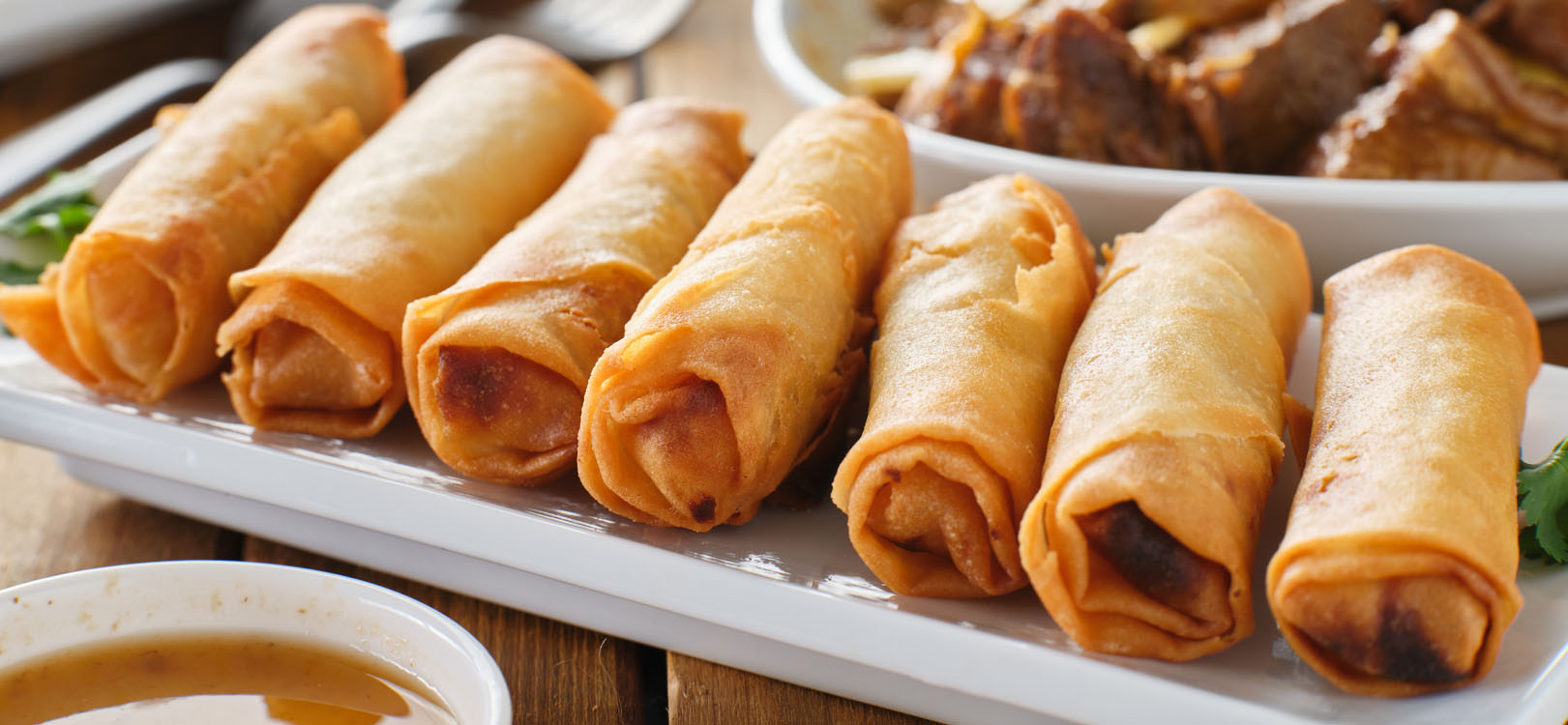
One of the most popular foods in Filipino cuisine. The dish is similar to a spring roll, which is typically filled with a mixture of ground meat, vegetables, and spices. The filling can be made with a variety of ingredients, such as pork, chicken, beef, or shrimp, as well as vegetables, such as carrots, cabbage, and onions. The filling is seasoned with garlic, onions, soy sauce, and other spices to add flavour.
Lumpia is a favourite appetizer or snack and is also a popular street food in the Philippines, making it a crowd-pleaser on every occasion.
12. Pancit
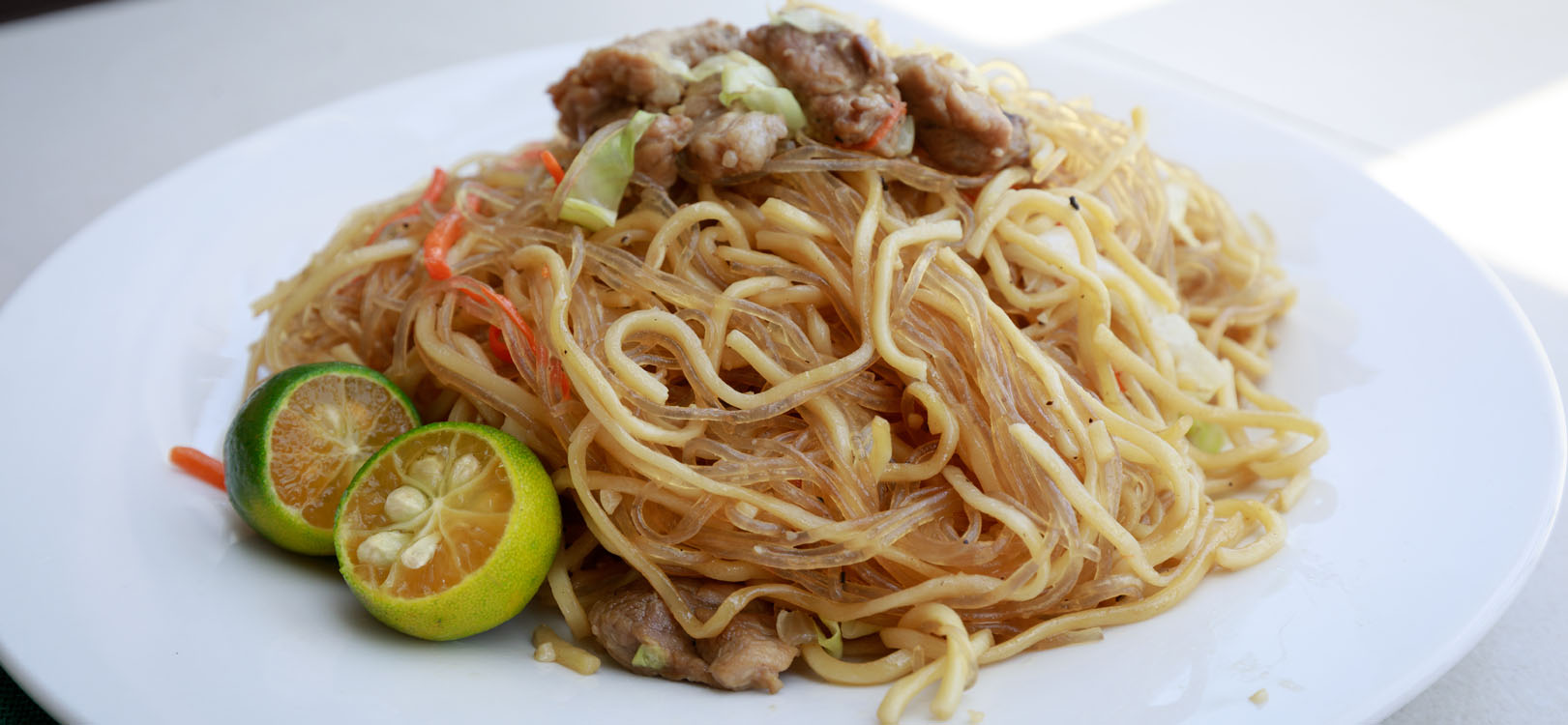
A noodle Filipino dish that comes in various forms but typically features thin rice noodles stir-fried with vegetables and meat (such as pork, chicken, or shrimp). Pancit is a staple at Filipino gatherings and celebrations, especially birthdays, as it depicts long life.
There are many different types of pancit, each with its own distinct flavours and preparation method. Some of the most common types of pancit include Pancit Bihon, Pancit Canton, Pancit Palabok, Pancit Malabon, and Pancit Habhab
The dish is believed to have originated in China and was brought to the Philippines by Chinese immigrants. Over time, the dish has been adapted and modified with local ingredients and cooking techniques.
13. Pinakbet
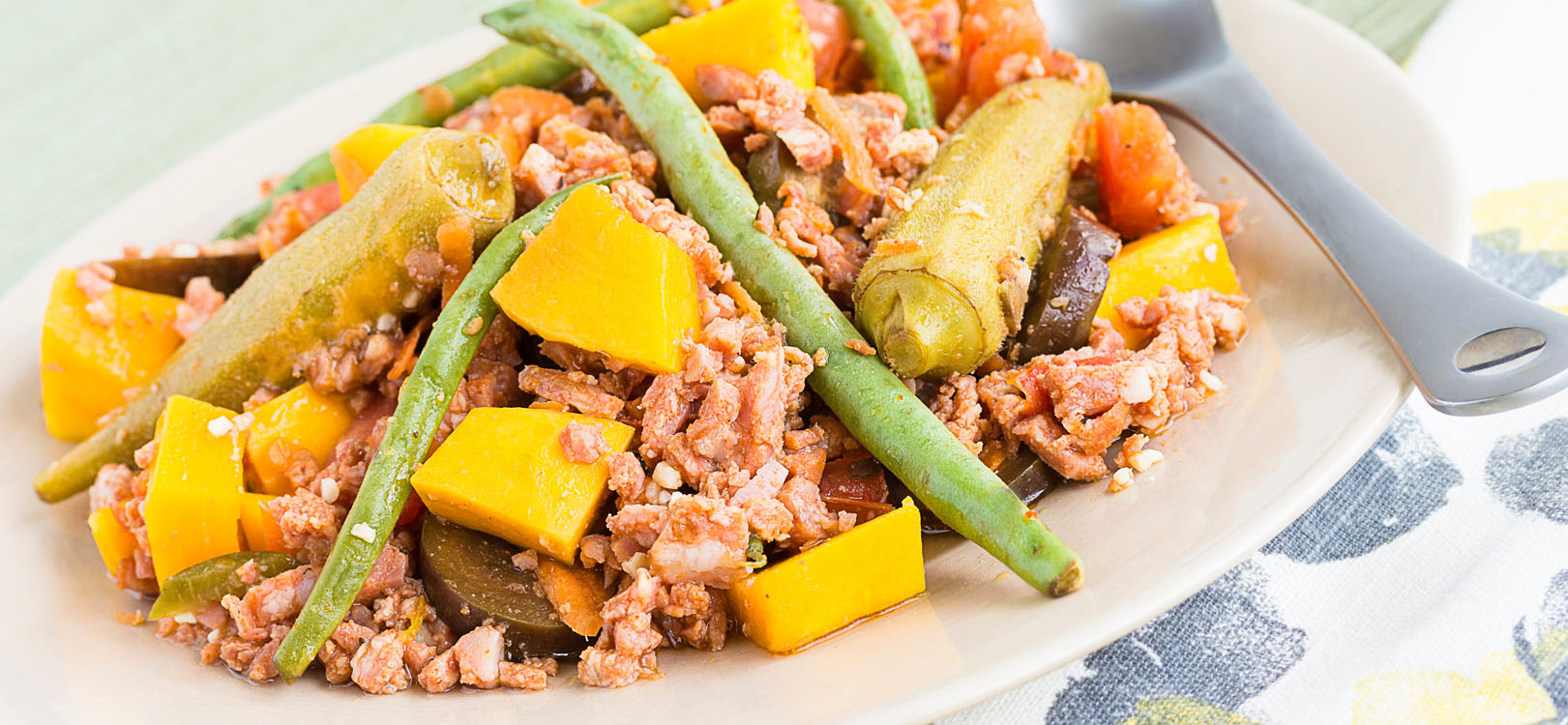
Pinakbet is a signature dish of the northern region of the country. It is a mix of fresh vegetables such as eggplant, bitter melon (ampalaya), squash, okra, and string beans. These vegetables are cooked in a sauce made with shrimp paste (bagoong), garlic, onions, and tomatoes, giving the dish a unique flavour. The combination of vegetables in pinakbet provides a range of textures and flavours, making it a tasty and healthy option for those looking to add more vegetables to their diet.
Pinakbet has become a symbol of Filipino cuisine that embodies the country’s rich flavour.
14. Sinigang
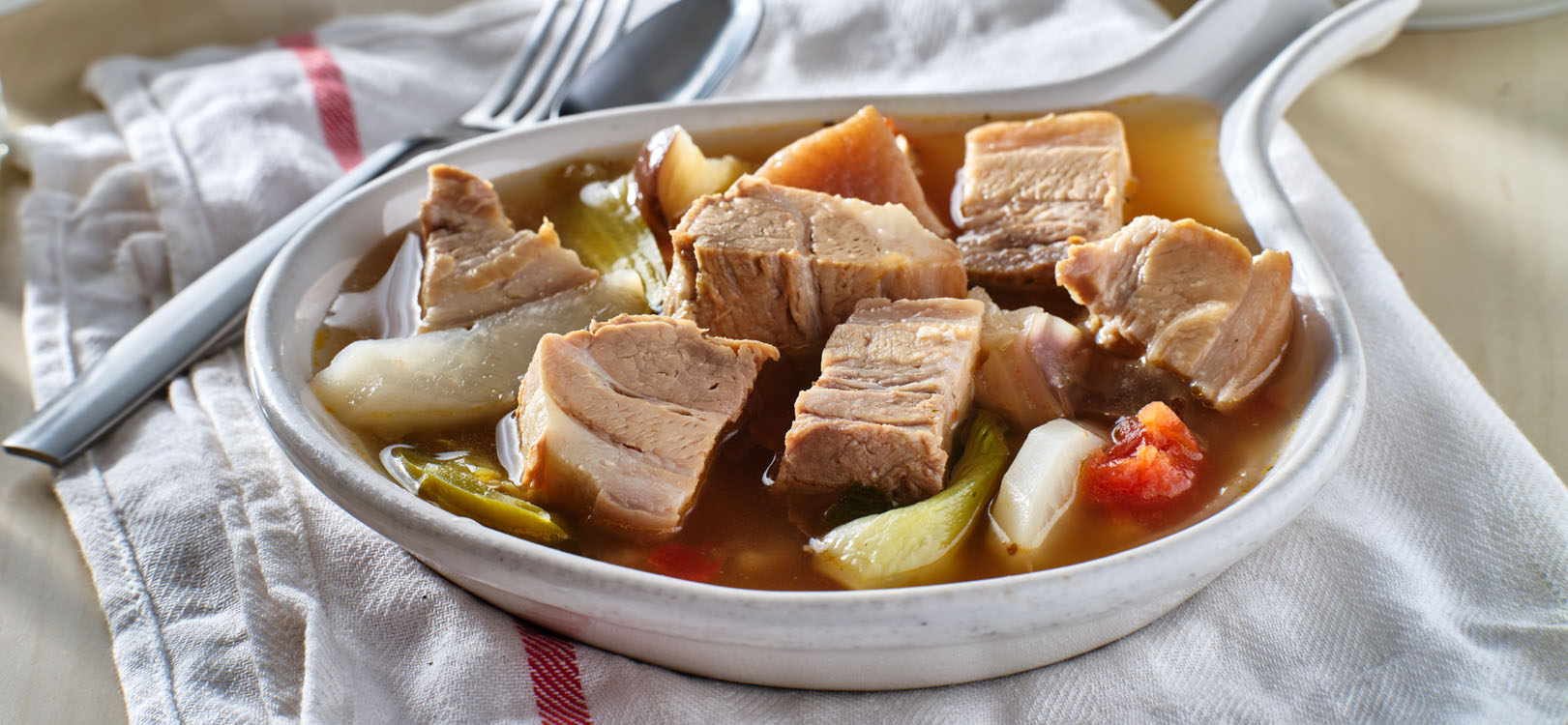
It is a traditional Filipino sour soup made with tamarind, tomatoes, onions, and a variety of vegetables (such as kangkong or water spinach). The soup is usually served with fish or pork and is best enjoyed on a cool day. The sourness of the soup comes from tamarind, which is widely used in Filipino cuisine to add a tangy flavour to different dishes.
In Filipino cuisine, this is one of the easiest yet most nutritious. Even when someone is unwell, this is the food of choice that is served.
15. Suman
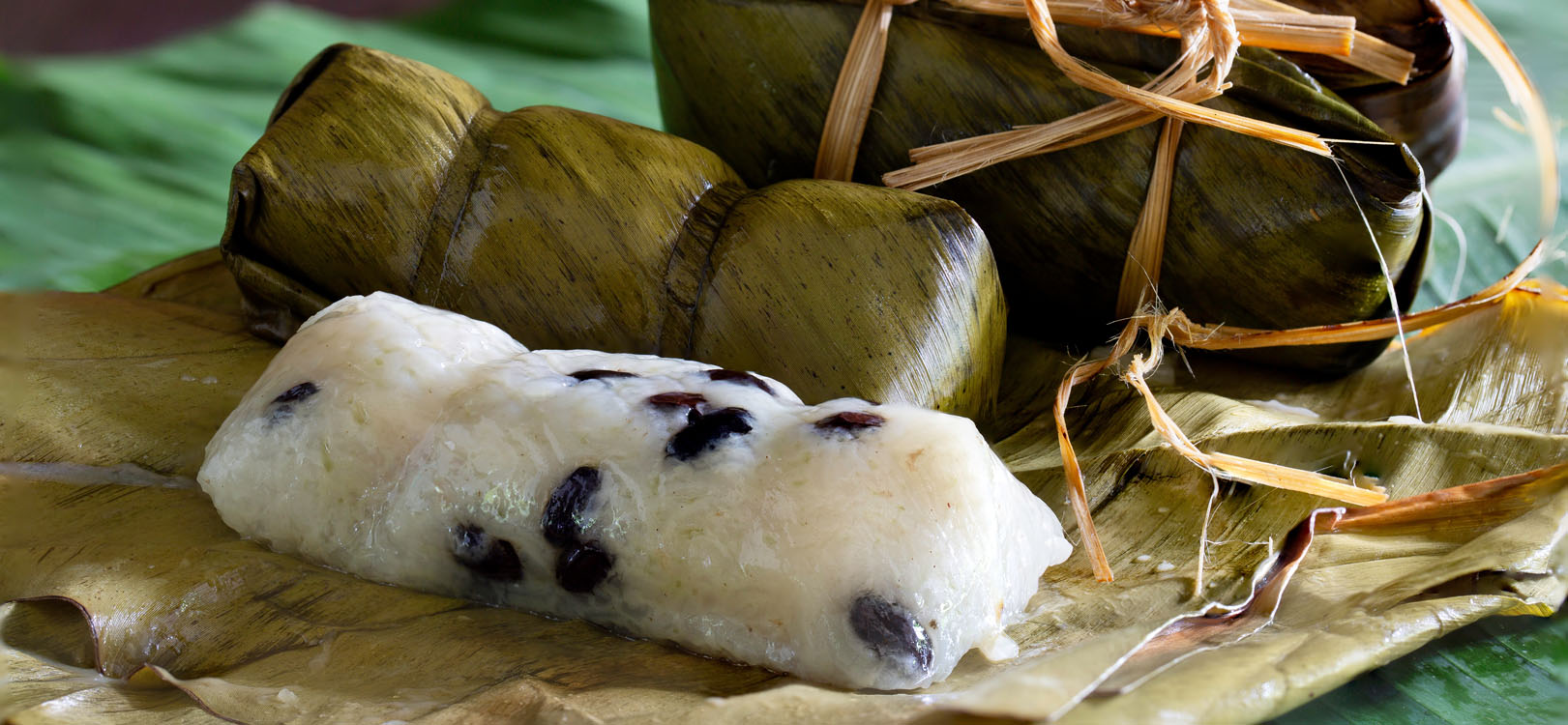
Suman is a traditional Filipino rice cake that is made by wrapping glutinous rice in banana leaves and steaming it until it is cooked through. In some places, rice is flavoured with coconut milk and sugar, giving the suman a sweet and creamy taste.
In cooking the Suman, it is important to use banana leaves not only to provide flavour to the suman but also to serve as a natural wrapper that helps to keep the rice moist and flavourful.
Suman is a popular snack and dessert in the Philippines. There are many different varieties of suman that can be found throughout the country, each with its own unique flavour and style. Some varieties include suman sa lihiya, which is made with lye water and has a distinct yellow colour, and Suman sa ibos, which is made with young coconut strips and often served with a sweetened coconut sauce.
Missing your favourite Filipino food? its high time to reach out to us and enquire about cheap Flights to the Philippines. Our Filipino travel experts are ready to assist you and provide you a smooth booking experience.





